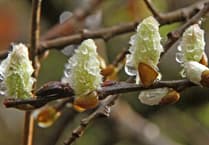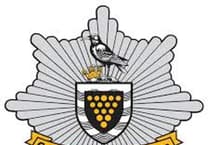We had a visitor looking in the lounge window during a rain shower late on Christmas Eve.
It was a moth that I couldn’t identify from indoors, but I reckon that it must have been a Santa moth.
It’s very unusual for any moth to be on the wing at this time of the year.
We had another stranger in the garden on Christmas Day, a small bird that visits only once or twice a year and as it picks up seeds that have dropped from the feeders it wags its tail.
It was, of course, a Pied wagtail and the name is deriving from its black and white appearance and the fact that it continuously pumps its tail up and down.
I think this visitor was a female as her back was dark grey instead of black.
I sing a little song that we all know whilst I am filling the bird feeders with sunflower seeds, albeit with different words.
It goes ‘Feed the birds, 24 quid a bag, 20, 20, 24 quid a bag, and boy, the large number of birds that visit the feeding station, for seeds, peanuts and fat balls certainly know how to feed.
I dug out a scarf and woolly gloves from the cupboard and went for a walk on the icy roads around the village before the holiday and I found a couple of Winter heliotrope plants had flowers on them.
These invasive plants travel along the bottom of hedgerows and across waste ground by their spreading rhizomes and, it appears, that we only have male plants in this country but their pink blooms certainly brighten the hedges over Christmas time.
On a stone wall near the crossroads were a group of light green Pixie cup lichens growing.
There are well over a thousand different lichens in the country and around half of them grow on trees and bushes.
Unlike other vegetation, lichens are a combination of algae and fungi and seem to have hardly any root system at all.
Yellow archangel is now showing its green leaves that have a distinctive white pattern on them.
This plant is related to White and the Red dead-nettles but have striking yellow blooms that will come during April and May.
Both the flowers and leaves give off an unpleasant smell when bruised.
As always when I walk these narrow roads, I have my eyes on the hedgerow all the time and although there aren’t many flowers to be seen since the hedges have been cut back with a flail, there are several tiny fungi growing on dead hazel twigs.
I found one that was around a couple of inches (5cm) in height and it certainly made up for the lack of wild flowers.




